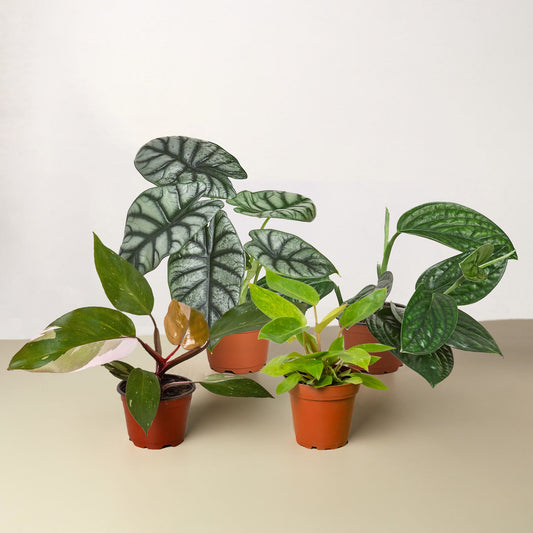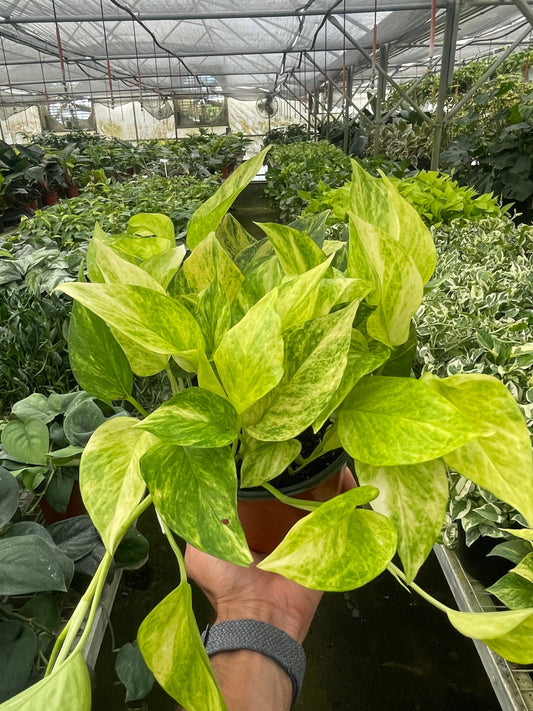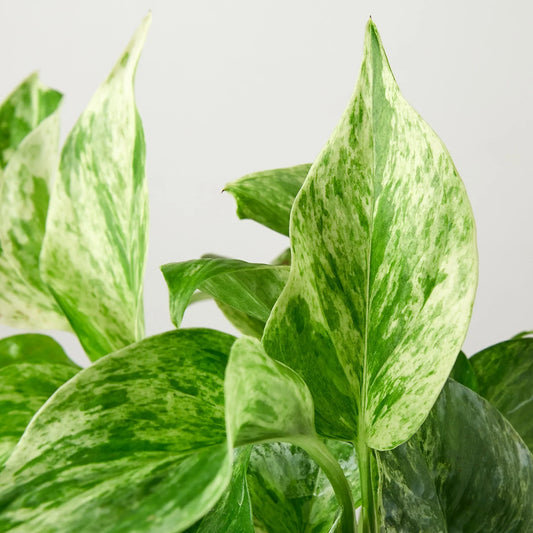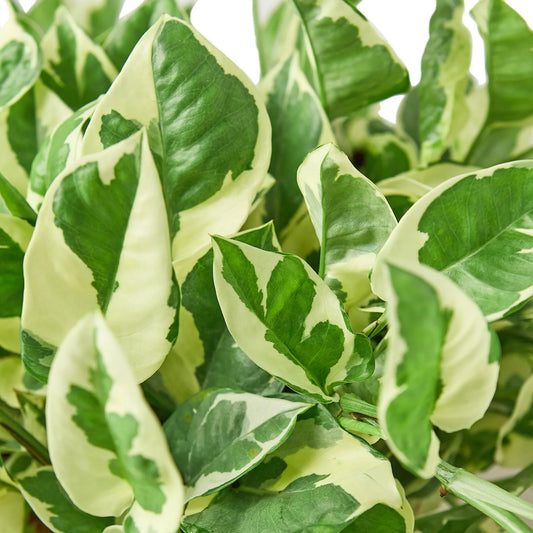Common Compact Dracaena Pests (And What To Do About Them)
Cafe Planta Team
If you're a fan of houseplants, chances are you've encountered a dracaena or two. These plants are incredibly popular for their striking foliage and easy-going nature. However, even the most laid-back plants can face challenges, and compact dracaenas are no exception. One of the most common issues? Pests.
In this article, we'll explore the world of dracaena pests and, more importantly, how to tackle them. From identifying the usual culprits to providing practical solutions, you'll soon be equipped with the knowledge to keep your compact dracaena happy and healthy.
Why Dracaenas Attract Pests
Before we get to the part where we fight off those pesky invaders, it's helpful to understand why dracaenas might attract them in the first place. Like any other plant, dracaenas have their vulnerabilities. Their leaves, which are often long and narrow, provide a perfect hiding spot for pests. Additionally, if the plant is stressed due to poor lighting or improper watering, it becomes even more susceptible to infestations.
Stress factors can make your dracaena more inviting to pests:
- Lighting: Dracaenas prefer moderate indirect light. Too much direct sunlight can scorch their leaves, while too little can weaken the plant.
- Watering: Overwatering or underwatering can stress the plant, opening the door to pest problems.
- Humidity: Low humidity levels can lead to dry conditions, which some pests find ideal.
By ensuring your dracaena is thriving, you’ll reduce the chances of pests setting up camp. But if they do appear, here's how to recognize them and what steps to take.
Identifying Common Dracaena Pests
Identifying the invaders is crucial because each type of pest requires a different approach to control. Let’s look at some of the most common pests that might decide your compact dracaena is their new home.
Mealybugs
These pests are like the freeloaders of the plant world, often hanging out on leaves and stems, covered in a white, cotton-like substance. They suck sap from the plant, which weakens it over time.
Signs of mealybug infestation include:
- White, cottony clusters on the plant.
- Yellowing leaves.
- Stunted growth.
Spider Mites
Spider mites are tiny, but their impact is significant. They spin fine webs on the undersides of leaves and also feed on the plant’s sap, leading to discolored and weakened leaves.
Look out for:
- Fine webbing on the plant.
- Speckled or discolored leaves.
- Leaves that drop prematurely.
Scale Insects
Scale insects have a hard shell and attach themselves firmly to plant stems. They also feed on sap, and a severe infestation can cause the plant to decline.
Indicators of a scale problem include:
- Brown or white bumps on stems or leaves.
- Sticky residue on or around the plant.
- Yellowing or dropping leaves.
Aphids
Aphids are small, pear-shaped insects that come in various colors, including green, black, and brown. They usually congregate on the undersides of leaves and can cause significant damage if not dealt with promptly.
Signs of an aphid infestation include:
- Curling or distorted leaves.
- Sticky residue known as honeydew.
- Presence of sooty mold due to honeydew.
Natural Pest Control Methods
When it comes to pest control, many plant lovers prefer to start with natural solutions before resorting to chemical treatments. Luckily, there are several effective, gentle ways to protect your dracaena from pests.
Neem Oil
Neem oil is a natural pesticide derived from the seeds of the neem tree. It works by disrupting the life cycle of pests, and it’s safe for both indoor and outdoor plants.
To use neem oil:
- Mix a teaspoon of neem oil with a quart of water and a few drops of dish soap.
- Spray the mixture on the affected areas of your plant.
- Reapply every 7 to 14 days as needed.
Insecticidal Soap
Insecticidal soap is another safe option for managing pests. It works by breaking down the protective outer layer of insects, causing them to dehydrate and die.
Here's how to apply insecticidal soap:
- Spray the solution directly onto the pests, covering them thoroughly.
- Make sure to reach the undersides of leaves where pests often hide.
- Repeat the treatment every few days until the infestation is under control.
Manual Removal
Sometimes, a good old-fashioned approach is all you need. Manual removal can be effective for small infestations.
Try these methods:
- Use a cotton swab dipped in alcohol to remove mealybugs or scale insects.
- Rinse the plant with water to dislodge spider mites or aphids.
- Inspect the plant regularly to catch pests early.
Environmental Adjustments
Beyond direct treatment, making some environmental adjustments can help prevent pests from returning. Here’s how adjusting conditions can create a less inviting environment for pests:
Humidity Control
Many pests thrive in dry conditions, so increasing the humidity around your dracaena can help keep them at bay.
- Use a humidity tray by placing pebbles and water in a tray under the plant.
- Mist the plant regularly to raise humidity levels.
- Consider using a humidifier in particularly dry environments.
Proper Lighting
Ensure your dracaena receives the right amount of light to keep it healthy and stress-free. Remember, too much direct sunlight or too little light can weaken the plant.
- Place your dracaena in a spot with bright, indirect light.
- Avoid placing it near hot windows or in dark corners.
- Rotate the plant occasionally to ensure even light exposure.
When to Use Chemical Solutions
While natural methods are effective, sometimes a pest infestation is too severe or persistent, and chemical solutions may be necessary. It's important to use these products responsibly to avoid harming beneficial insects or the environment.
Choosing the Right Pesticide
Select a pesticide labeled for indoor use and suitable for the specific pests affecting your plant. Always read the label carefully to ensure safe and effective use.
- Look for products specifically targeting the pests you have identified.
- Ensure the product is safe for use on dracaenas.
- Follow all safety instructions provided on the label.
Application Tips
To minimize risk and maximize effectiveness, apply chemical solutions thoughtfully:
- Apply the pesticide in a well-ventilated area.
- Wear gloves and protective eyewear as a precaution.
- Spray in the early morning or evening to avoid direct sunlight.
Preventing Future Infestations
Once you've dealt with pests, it's important to keep them from coming back. Prevention is an ongoing process that involves regular attention and care.
Regular Inspections
Make it a habit to check your dracaena for signs of pests on a regular basis. Catching an infestation early makes it much easier to manage.
- Inspect both the tops and undersides of leaves.
- Check the soil surface and around the pot for pests.
- Look for any changes in leaf color or texture.
Healthy Plant Practices
Keeping your dracaena healthy is the best defense against pests:
- Ensure proper watering by allowing the top inch of soil to dry out before watering again.
- Feed the plant with a balanced fertilizer during the growing season.
- Maintain appropriate humidity and lighting conditions.
Consulting a Professional
If you've tried everything and still can't rid your dracaena of pests, it might be time to call in a professional. Pest control experts have access to stronger treatments and can offer tailored advice.
When to Call for Help
Consider consulting a professional if:
- The infestation persists despite multiple treatments.
- You’re unsure about the type of pest or how to treat it.
- Your dracaena is significantly declining in health.
Choosing a Pest Control Service
When selecting a service, consider the following:
- Look for companies that specialize in indoor plants.
- Ask for recommendations from friends or online reviews.
- Inquire about the methods and products they use.
Final Thoughts
Dealing with pests on your compact dracaena might seem daunting at first, but with the right approach, you can manage and prevent infestations effectively. From natural remedies to chemical solutions and preventative strategies, there's a wealth of options to explore.
At Cafe Planta, we're passionate about helping you care for your houseplants. If you have questions or need further advice, feel free to email us or reach out via Instagram. Whether you're new to plant parenting or a seasoned pro, we're here to support your journey in creating a thriving green space at home.



















